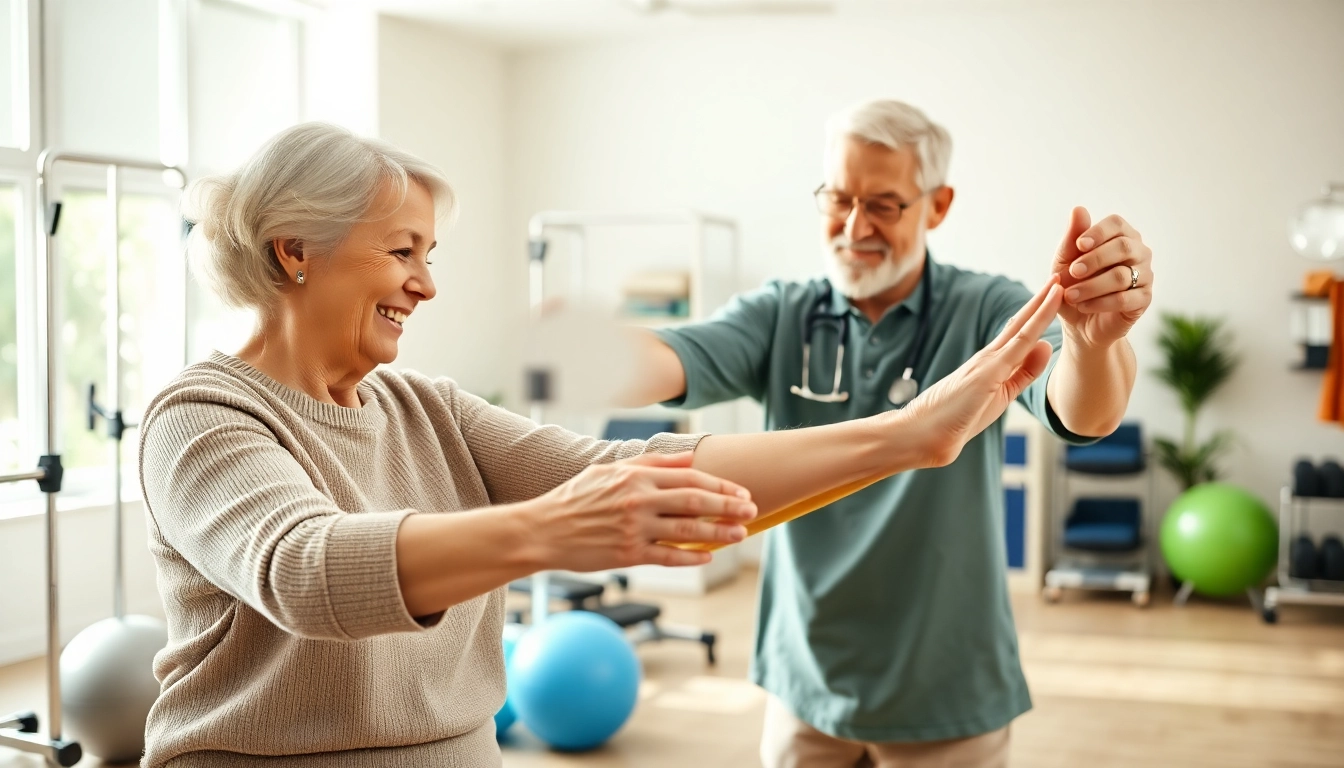
Understanding Senior Physiotherapy in Edmonton
As we age, our bodies undergo various changes that may hinder mobility and overall quality of life. This is where senior physiotherapy edmonton comes into play, providing specialized treatment that focuses on the unique needs of the elderly. Understanding the fundamentals of senior physiotherapy is crucial for both seniors and their caregivers.
What is Senior Physiotherapy?
Senior physiotherapy is a branch of physical therapy designed specifically for the elderly population. It addresses the physical challenges and health concerns that commonly arise with age. Physiotherapists who specialize in this field work collaboratively with patients to improve their physical mobility, manage pain, and enhance their overall well-being through tailored therapeutic approaches.
Benefits for the Aging Population
Engaging in senior physiotherapy offers numerous benefits, including:
- Improved Mobility: Personalized exercises help seniors regain lost movement and function.
- Pain Management: Therapeutic strategies can alleviate chronic pain without the heavy use of medications.
- Fall Prevention: Strengthening and balance exercises significantly reduce the risk of falls, a common concern for seniors.
- Enhanced Quality of Life: Overall improvements in health and mobility lead to an enhanced quality of life and independence.
Common Conditions Treated
Seniors often face a range of health issues that can be managed through physiotherapy. Common conditions treated include:
- Arthritis
- Post-stroke rehabilitation
- Osteoporosis
- Joint replacements
- Chronic pain syndromes
Key Techniques and Treatments
Manual Therapy Approaches
Manual therapy involves hands-on techniques used by physiotherapists to manipulate and mobilize joints and soft tissues. This may include:
- Massage Therapy: Reduces muscle tension and promotes blood circulation.
- Joint Mobilization: Increases joint range of motion and helps alleviate stiffness.
- Myofascial Release: Addresses fascial restrictions, enhancing overall movement.
Strengthening and Balance Exercises
Strengthening exercises tailored for seniors aim to enhance muscle strength and stability. Balance exercises are essential for fall prevention. Examples include:
- Resistance Training: Utilizing bands or light weights to build strength.
- Balance Training: Activities like standing on one leg or using balance boards.
- Flexibility Exercises: Stretching to maintain joint function and reduce stiffness.
Home Exercise Programs
Physiotherapists often provide personalized home exercise programs to encourage ongoing rehabilitation. These programs typically include:
- Guided exercises that can be performed safely at home.
- Educational materials to ensure proper techniques and safety.
- Regular follow-ups to modify the program as needed.
Choosing the Right Physiotherapy Clinic
Criteria for Selection
When selecting a physiotherapy clinic, consider the following criteria:
- Qualifications: Ensure the physiotherapist has the necessary credentials and experience in senior care.
- Available Services: Look for clinics that offer a wide range of treatments tailored to seniors.
- Facility Accessibility: The clinic should accommodate mobility issues and provide easy access for seniors.
Questions to Ask Your Physiotherapist
It’s essential to engage with your physiotherapist actively. Here are some questions to consider:
- What is your experience with senior patients?
- How will you tailor the treatment to my specific condition?
- What goals should I aim for during my rehabilitation?
Utilizing Patient Testimonials
Patient testimonials can provide valuable insights into the effectiveness of a clinic. Look for:
- Success stories from previous clients.
- Overall satisfaction ratings and feedback on the staff’s approachability.
- Information on the clinic’s atmosphere and the personal touch in care.
Barriers to Accessing Physiotherapy
Understanding Costs and Insurance Coverage
Financial considerations can often create barriers to accessing physiotherapy. It’s crucial to:
- Understand what your insurance plan covers regarding physiotherapy.
- Ask clinics about payment plans or sliding scale fees.
- Explore community programs that may offer low-cost physiotherapy services.
Transportation and Mobility Issues
Many seniors face transportation challenges which can hinder their ability to attend therapy sessions. Solutions include:
- Identifying transport services designed for seniors.
- Encouraging family or friends to help with transportation.
- Considering clinics that offer mobile physiotherapy services at home.
Available Community Resources
Community resources play a significant role in supporting seniors’ access to physiotherapy. This can include:
- Local health initiatives promoting exercise and wellness programs.
- Senior centers offering arranged physiotherapy consultations.
- Non-profit organizations dedicated to health and wellness for older adults.
Measuring Success in Senior Physiotherapy
Setting Goals for Rehabilitation
Goal setting is a critical component of physiotherapy success. Goals should be:
- SMART: Specific, Measurable, Achievable, Relevant, Time-bound.
- Patient-centered, involving the patient in the goal-setting process.
- Reassessed regularly to reflect changes and progress.
Tracking Progress and Outcomes
Monitoring progress can help determine the effectiveness of treatment. This can be achieved through:
- Regular assessments by the physiotherapist.
- Keeping a journal of exercises, pain levels, and overall feelings of health.
- Feedback sessions to adjust treatment plans as necessary.
Long-term Health Implications
Continuous participation in physiotherapy can lead to long-term health benefits, such as:
- Better management of chronic conditions.
- Increased independence and ability to perform daily activities.
- Overall enhancement of mental well-being through improved physical health.